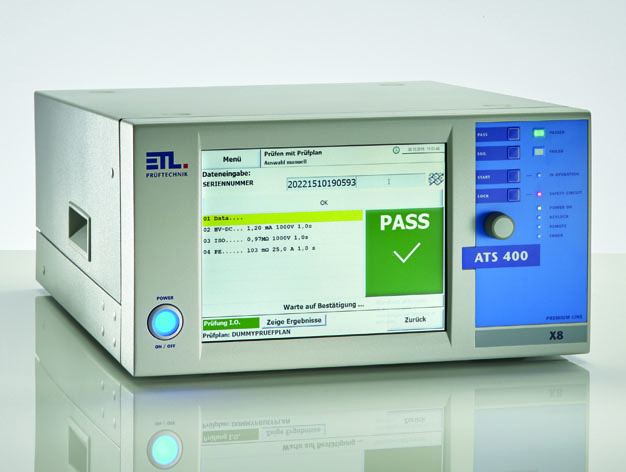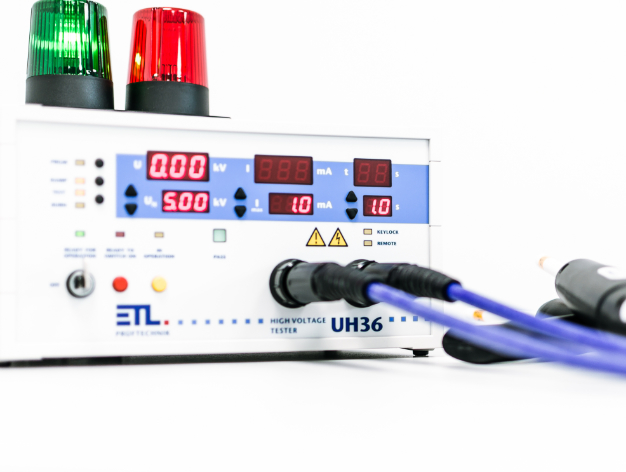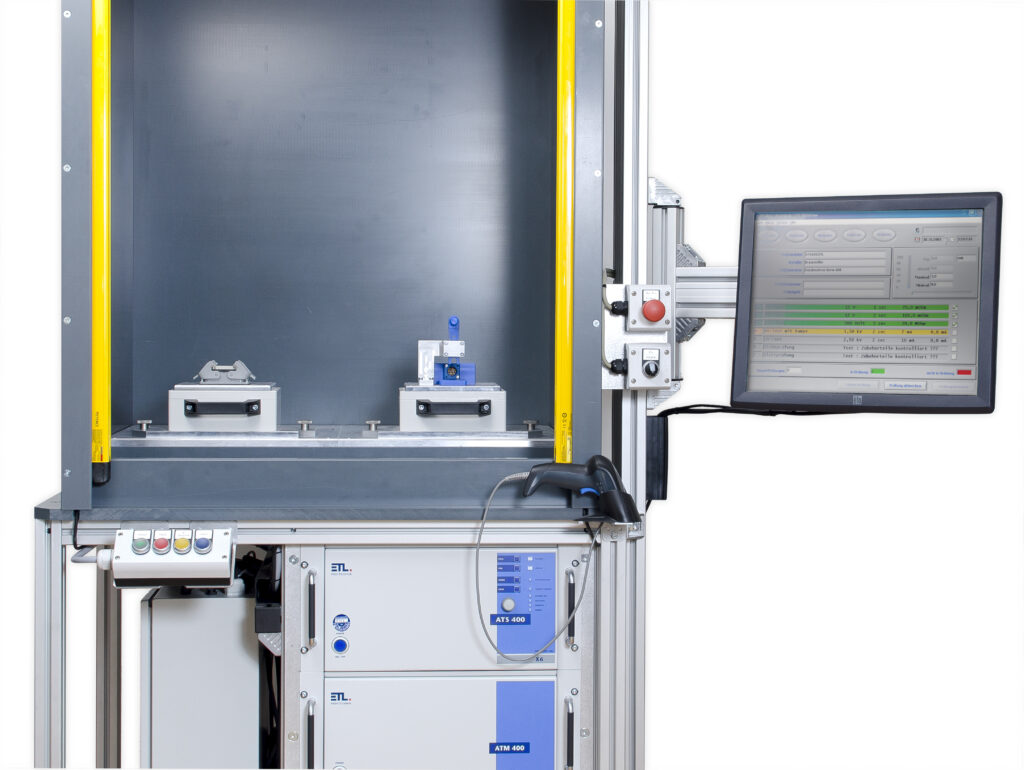Leakage Current Test Device
Leakage Current Test Device ETL Series ATS400
The ETL leakage current test devices comply with all common industry (EN 60990) and medical standards (EN 60601). Leakage currents up to 30 mA can be reproducibly measured with a frequency of up to 1 MHz. For supplying the test specimens with mains voltage, the leakage current test devices offer a variably adjustable voltage source up to 270V / 400V. The frequency can be set between 45 - 65Hz.
Leakage Current Test Device
Leakage Current Test Device ETL Series ATS400
The ETL leakage current test devices comply with all common industry (EN 60990) and medical standards (EN 60601). Leakage currents up to 30 mA can be reproducibly measured with a frequency of up to 1 MHz. For supplying the test specimens with mains voltage, the leakage current test devices offer a variably adjustable voltage source up to 270V / 400V. The frequency can be set between 45 - 65Hz.
WHAT IS AN INSULATION RESISTANCE TEST?

An insulation resistance test is a procedure to verify the insulation resistance of an electrical device or installation. Insulation resistance is the resistance to the flow of current through unintended paths, such as through insulation or the protective conductor. During the insulation resistance test, the current flowing through these unintended paths is measured to ensure that it is within safe limits. A high insulation resistance measurement may indicate faulty insulation or other issues that could lead to an increased risk of electric shocks. Proper insulation resistance testing is crucial to ensure the safety of individuals using the electrical device and to confirm that it complies with applicable safety standards.
Request your inquiry now
quickly and effortlessly!
HOW IS AN INSULATION RESISTANCE TEST CONDUCTED?
An insulation resistance test is a procedure to verify the insulation resistance of an electrical device or installation. Insulation resistance is the resistance to the flow of current through unintended paths, such as through insulation or the protective conductor. During the insulation resistance test, the current flowing through these unintended paths is measured to ensure that it is within safe limits. Here are the basic steps to conduct an insulation resistance test:
- Standards: Analyze which standard and specified diagrams need to be followed for the test.
- Preparation: Ensure that the device is turned off and disconnected from the power supply. Also, check if the test equipment is functioning properly and calibrated.
- Connection of the test equipment: Connect the test equipment to the device’s terminals to be tested. Ensure that the connection is tight and secure.
- Setting the test voltage / test current: Set the desired test voltage and maximum test current on the test equipment. The test voltage / test current depends on the specific requirements of the device or the standard being tested.
- Performing the test: Turn on the test equipment and initiate the insulation resistance test.
- Evaluation of the result: The measurement results are given in amperes. There are various standards and regulations that specify maximum values for insulation resistance to ensure safety.
The insulation resistance test is an active test where the test object is tested in the energized state.

Request your inquiry now
quickly and effortlessly!
LEAKAGE CURRENT MEASUREMENT WITH ETL TEST EQUIPMENT
Leakage Current Testing: Ensuring Highest
Electrical Safety
ETL Technologies GmbH: Your partner for precise leakage current testing
Leakage current testing, a central procedure to ensure electrical safety, is carried out at ETL Technologies GmbH with the utmost care and precision. This testing is essential to ensure that electrical devices meet the required safety standards and to minimize the risk of electric shocks.
What is leakage current testing?
Leakage current testing measures the current that can flow through the insulation of an electrical device under normal operating conditions. This test is a crucial indicator of the electrical safety and reliability of devices and installations. Low leakage current is an indication of effective insulation and minimizes the risk of electric shocks.
Conducting leakage current testing: Step by step
Preparation phase: Ensure that the device to be tested is properly prepared and operational under normal operating conditions.
Setting and checking the test equipment: Select the appropriate test parameters on the leakage current test equipment and verify the correct functioning of the device. This ensures that the test is conducted under the right conditions.
Performing the measurement: Activate the test equipment to measure the leakage current. Pay attention to compliance with all safety regulations during the measurement.
Analysis and interpretation of results: Evaluate the measurement results to determine if the device complies with applicable safety requirements.
Leakage current testing is a crucial step in verifying electrical safety in various applications. With advanced testing equipment and comprehensive expertise from ETL Technologies GmbH, you can rely on accurate and reliable results. Our extensive experience in leakage current testing allows us to make a significant contribution to securing and improving electrical safety.
Request your inquiry now
quickly and effortlessly!
OUR SALES TEAM IS READY FOR YOU!
Our contact options:
Email: info@etl-technologies.ch
Phone: +41 56 485 89 89
REQUEST NOW!
Click here to get to the testing device in two minutes – fast, easy, and without obligation.
Answer questions, provide contact details, and you’re done!
We will definitely get in touch with you.



